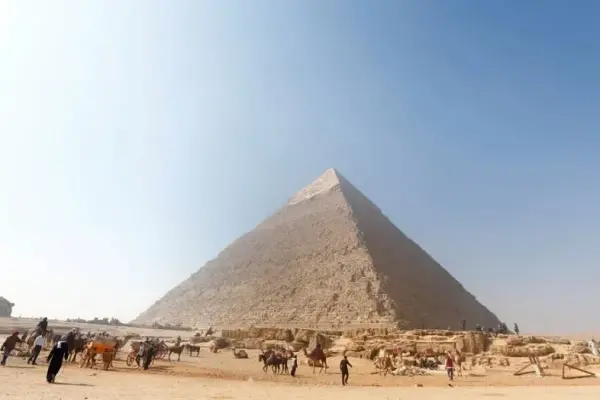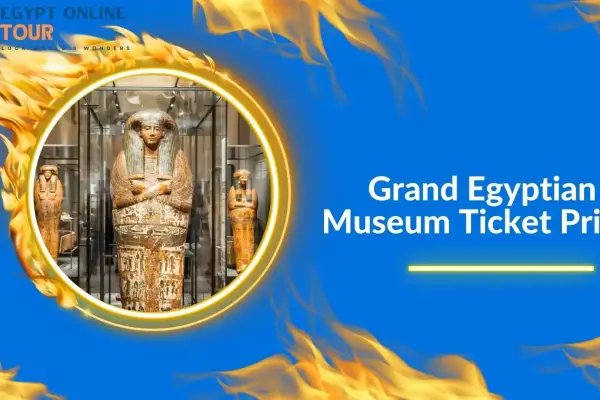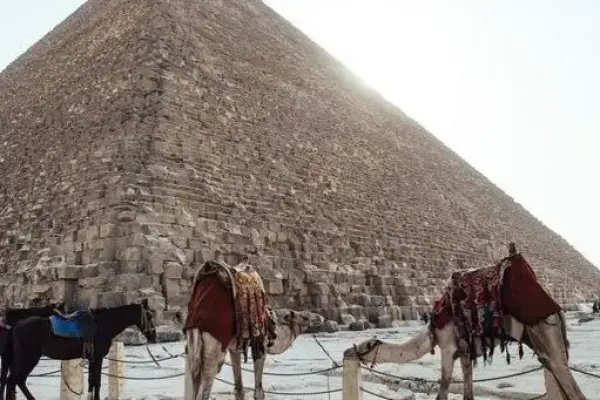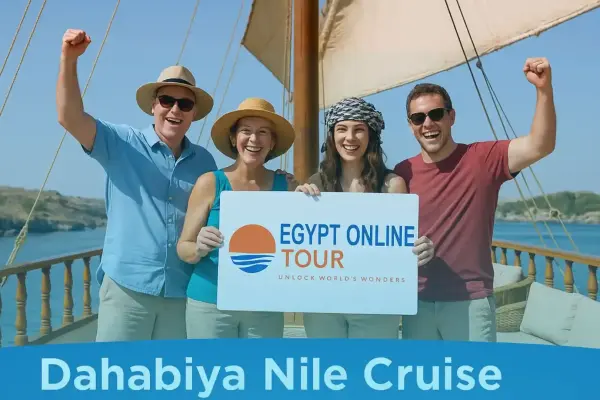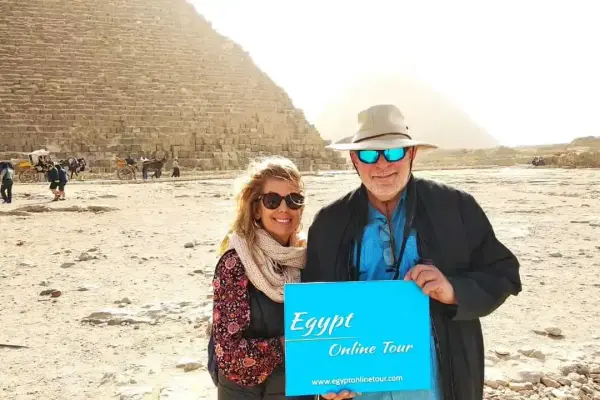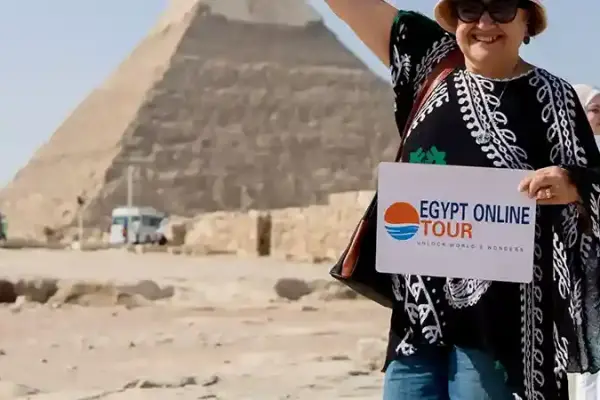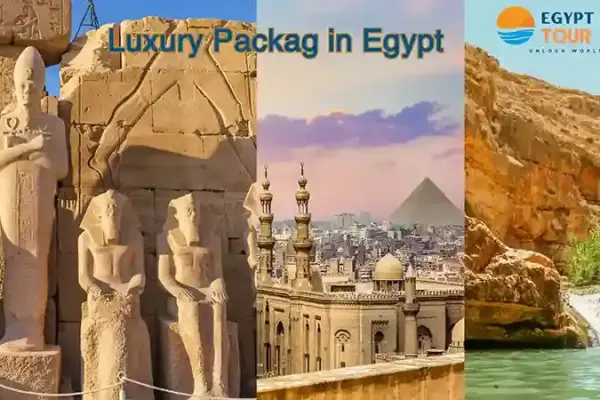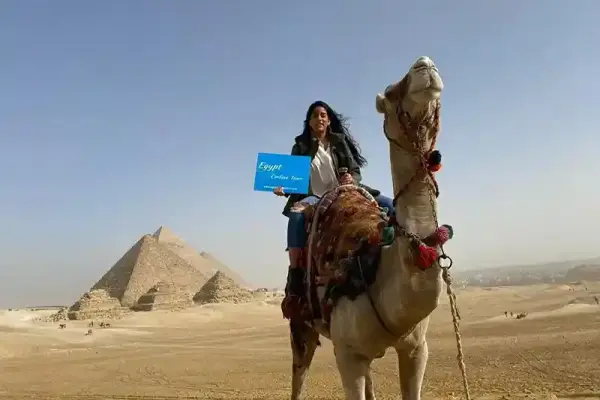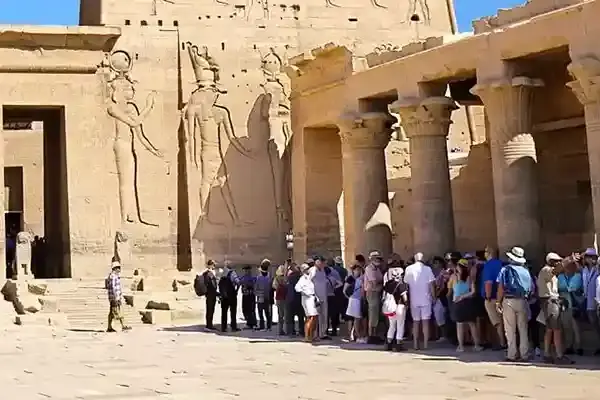Dakhla Oasis Egypt – Ancient Villages & Desert Retreat
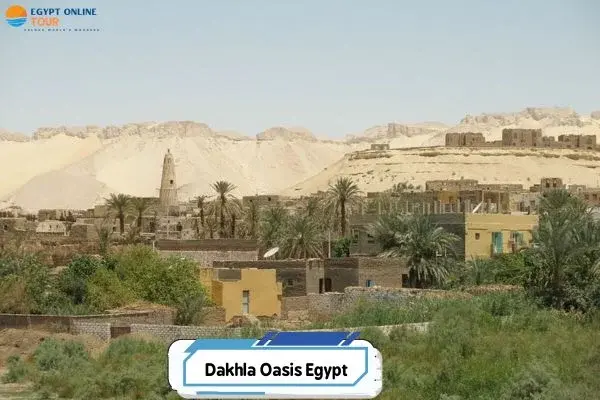
- Sep 24, 2024
- Egypt Oasis Guide | Top Desert Oases to Visit in Egypt
- 2,543
Dakhla Oasis, located in the Western Desert of Egypt, is one of the charming tourist destinations. Its stunning landscapes and rich history characterize it. Once an important trade route and the capital of the region during the Pharaonic era, Dakhla Oasis is today famous for its magnificent monuments, natural beauty, and vibrant culture of its inhabitants.
The oasis is agriculturally cultivated with numerous groundwater sources, providing a relaxing atmosphere with its warm natural springs.
Table of contents [Show]
- Dakhla Oasis Overview
- Top Things to Do
- Historic Villages & Sites
- When to Visit
- How to Get There
- Where to Stay
- Practical Tips
- Suggested Itineraries
- Food & Local Culture
- Tours We Offer
Dakhla Oasis Overview
Dakhla Oasis truly offers a unique and unforgettable travel experience.
Where Is Dakhla Oasis?
Dakhla Oasis is a desert oasis in Egypt located west of the Nile River, between Cairo and Luxor. It covers an area of approximately 2,000 square kilometers and is famous for its rich history and stunning natural scenery.
The oasis has been inhabited since the Sixth Dynasty, around 2550 BC, and was a vital trade route linking Dakhla to other oases and the Nile Valley.
Dakhla Oasis includes many important sites, including Mut, the village of Al-Qasr, and the Dakhla Oasis Heritage Museum. The area also offers natural attractions, such as hot springs and the opportunity to go on a desert safari.
Why Visit Dakhla Oasis
A visit to Dakhla Oasis is an opportunity to explore this hidden gem and immerse yourself in its fascinating history and stunning scenery.
A Historical Perspective
The dates of Dakhla Oasis go back to ancient times, with evidence of human settlement dating back to prehistoric times.
A fabric of cultures
In Dakhla Oasis, history has woven a complex tapestry of cultures. The oasis served as a melting pot of civilizations over the centuries, from Pharaonic, Roman, Coptic, and Islamic influences. Today, visitors can see the remains of these diverse cultures in the form of temples, churches, and ancient historical sites.
Oasis of Tranquility and Pristine Beauty
Dakhla Oasis dazzles travelers with its peaceful atmosphere and pristine natural beauty. The contrast between lush palm groves and the surrounding golden sand dunes creates a surreal and picturesque landscape that is a paradise for photographers.
Top Things to Do
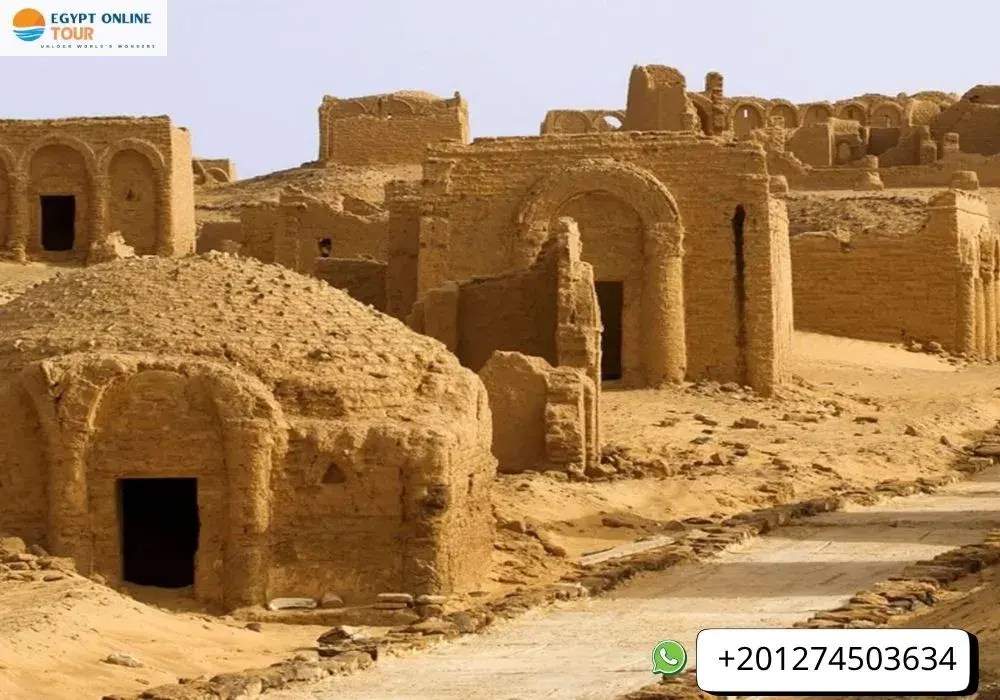
There are a lot of wonderful things to do during a visit to Dakhla Oasis.
Natural Hot Springs (Bir Talata, Al‑Dohous)
Hot springs are an ideal way to relax and unwind amidst the stunning desert landscape. The sulfide- and iron-rich water is heated to about 40 degrees Celsius, making it ideal for refreshing swimming.
Whether you visit early or during the day, these natural hot springs provide a soothing and rejuvenating experience that will leave you feeling refreshed and energized.
Dakhla Oasis boasts over 500 thermal springs, perfect for relaxing after a day of exploration. Visiting the natural hot springs in Bir Talata or the village of Al‑Dohous is a must-try experience in Dakhla Oasis.
Other favorite springs include:
1- Bir Tarfawi
2- Mut Springs
3- Balat Hot Springs
These hot mineral springs are a treat for desert safari lovers who want to relax and unwind. Most tourists visit a hot spring accompanied by a picnic or short walk around the area to enjoy the natural atmosphere.
Take this opportunity to connect with nature and pamper yourself in the healing waters of Dakhla Oasis.
Desert Safari & Sand Dunes
When visiting Dakhla Oasis, a desert safari tour is one of the activities you should definitely do. This exciting adventure will allow you to explore the breathtaking beauty of the surrounding desert landscape and experience traditional Bedouin culture.
You can choose a day trip that includes visits to Al-Gedida and Qalamun, where you can drive through sand dunes, visit a rejuvenating spring, and explore the old village of Al Qasr. For a more immersive experience, you can also embark on longer trips organized by expert beauty guides. Make sure you have the necessary permits if you want to venture into remote areas.
In Dakhla Oasis, a desert safari tour is an unforgettable experience that will leave you with lasting memories of this unique desert paradise.
- White Desert Camp Egypt will also be preferable for desert adventure lovers
Stargazing & Night Sky
Egypt offers enchanting natural sites that provide the perfect environment for an experience, with clear skies and areas away from light pollution.
When you look up at the night sky away from the city lights, you discover a whole new world of beauty and magic. With minimal light pollution, the sky above Dakhla reveals the Milky Way, constellations, and meteor showers, for which many lodges offer telescopes and expert commentary. From vast deserts to nature reserves, you'll find places that allow you to see galaxies and stars as if they were right next to you.
Stargazing is not just a hobby; it is a unique experience that takes people back to their roots and allows them to contemplate the universe.
Historic Villages & Sites
There are about 16 villages, but the most important of which is Mut village.
Mut Old Town (Mud‑brick lanes)
The village of Mut, an ancient village, is considered the capital of the Dakhla Oasis. The village's name goes back to the ancient Egyptian goddess Mut, a sacred goddess of the Theban Trinity. The oasis is still inhabited by a small number of locals, and modernity is an advantage that the place is gaining very quickly.
The village is famous for the following:
- Many restaurants
- Sulfur springs
- Beautiful palm groves
- The remains of a famous ancient castle
- The medieval Islamic cemetery
- Its mud-brick buildings and houses, and its narrow alleys.
- It also has winding streets around old mud-brick houses.
- It has an old castle that is the remains of the old town.
- One of the most important landmarks of the village is the heavily decorated Al-Farouq Mosque. It is the mosque that attracts tourists who flock to the area and the huge number of skilled table makers, cotton stick makers, tailors, blacksmiths, and mills they meet there.
Today, the Dakhla Oasis Archaeological Training and Preservation Project helps villagers learn to honor and preserve their heritage.
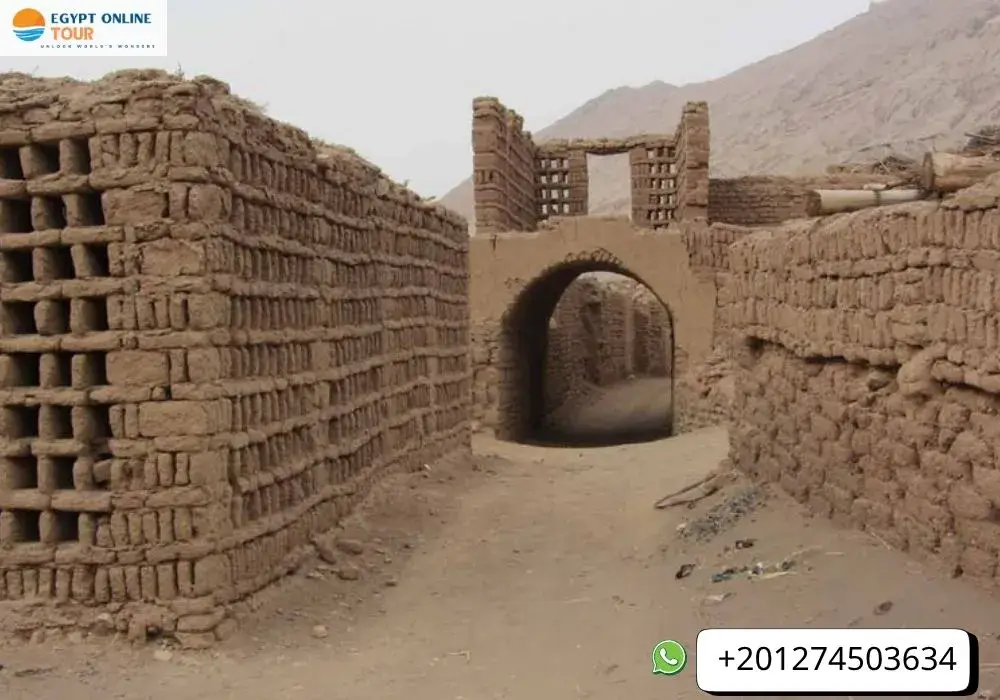
Al‑Qasr Heritage Village
Al Qasr is a small village in the Dakhla Oasis. The village is an interesting place to visit, as no major changes have been made to it since ancient times.
In different corners of the village, archaeologists found a pottery factory, an ancient corn mill, and various Roman, Mamluk, and Ottoman monuments. It has a mosque and a palace school.
Palace Mosque and Quranic School
Both the Palace Mosque (also known as Nasr al-Din Mosque) and the Quranic School date back to the Ayyubid era.
Built of mud brick, the mosque has a well-preserved wooden minaret 21 meters high. The attractive Quranic inscriptions on the woodwork are elegantly attractive. It includes a gathering hall, a prayer hall, and a number of painted corridors. The mosque is designed in the Ayyubid architectural style and is decorated with simple ornaments. In school, only subjects related to Islam are taught.
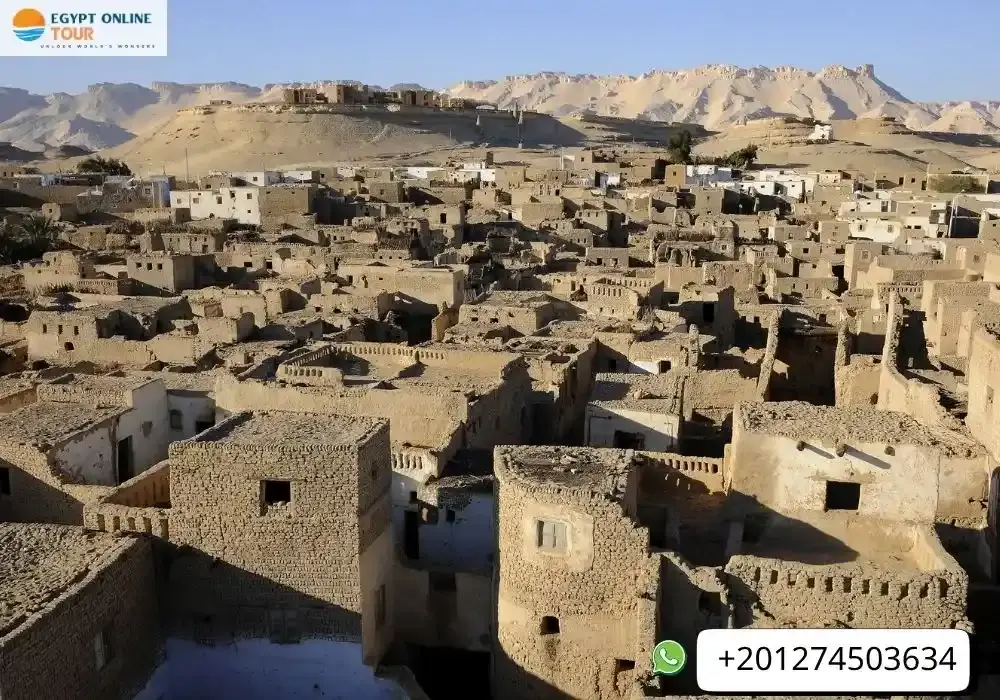
Deir el‑Hagar Roman Temple
The temple is located in Deir al-Hajar, which can be translated as "Monastery of Stone." The Roman temple was located south of the cultivated area in the Dakhla Oasis.
Who built it?
This sandstone temple was built during the reign of the Roman Emperor Nero (54-67 AD) and was decorated during the reigns of Vespasian, Titus, and Domitian, who decorated the massive gate. Other Roman rulers made small contributions to the decorations, with recent inscriptions dating back to the 3rd century AD.
Why was it built?
The temple was built primarily to be dedicated to the Theban triad of Amu-Ra, Mut, and Khonsu.
Overview:
The temple is one of the smallest temples in Egypt. It is in good condition, as the building has been covered with sand for centuries. A few centuries after its construction, it was converted into a Coptic monastery. Thus, the current name is a monastery.
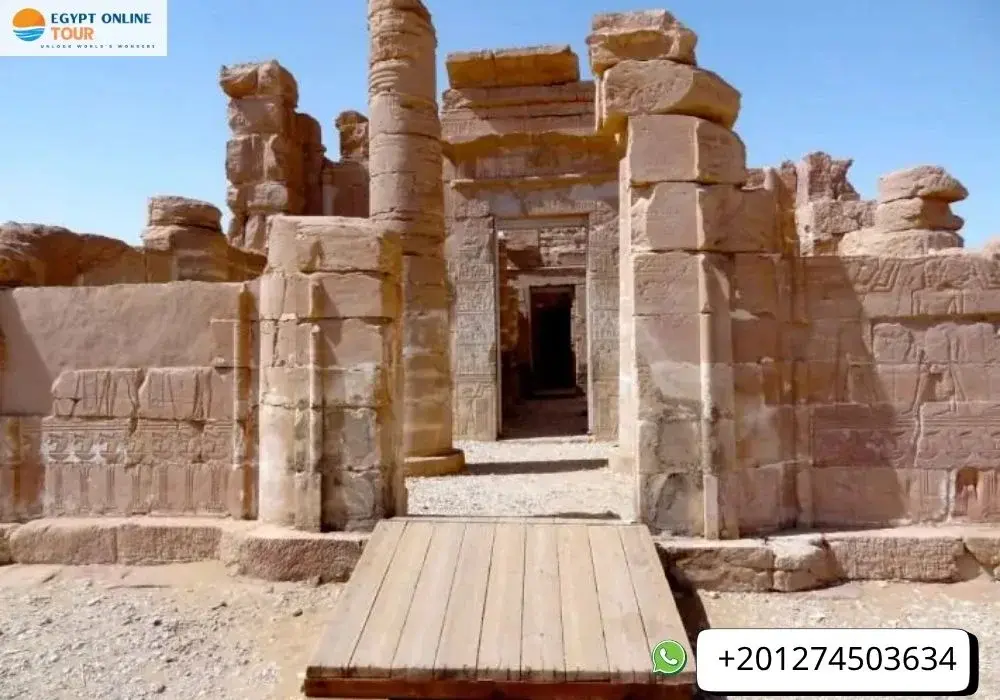
Al‑Muzawwaqa Tombs
The Mazwaka Tombs are one of the most important and beautiful archaeological and historical areas in the New Valley, and are located about 5 km from the village of Al-Qasr in Dakhla
Historical Context
The history of these tombs in Mazwaka dates back to the Roman era in the second century AD. It is one of the most important and famous shrines in Dakhla Oasis, as this strange name for these tombs goes back to their Pharaonic drawings and then their beautiful decorative colors that combined a number of arts and a number of ancient Pharaonic beliefs, such as in the myths of the Pharaohs and Roman beliefs, and all their colors used and then their drawings on them that were previously drawn on its walls are a group of very bright colors in a wonderful and very eye-catching way.
It was discovered in 1973 by the great Egyptologist and Dr. Ahmed Fakhry.
Artistic Detail
The ancient Egyptian artist was creative in using all colors of fixed oxides, and he also used egg albumin.
These tombs feature several decorative panels, colorful paintings, and living religious inscriptions that originally combined the ancient Egyptian gods of the Pharaonic religion of the ancient Egyptians with the Roman gods.
The Story of the Two Chambers: The Story of Padi-Osir and Priest of Osiris
Recently, archaeologists uncovered two remarkable tombs, recognized by experts as having both Pharaonic and Roman origins. The Mazwaka tombs stand out for their exceptional archaeological significance, setting them apart from other ancient sites in Egypt. Their vivid wall art and well-preserved carvings reveal the fascinating evolution of Egyptian architecture and the mastery of sculptural technique through centuries of civilization. Studying these tombs offers rare insights into how artistic styles and construction methods developed and blended across different historical periods.
The first tomb
The first tomb is known as “Padi Osiris”, the priest who built his tomb in that place, and his name means the gift given to the god Osiris. That ancient tomb contained two ancient rooms intertwined with each other, and at that time it was already painted with a large and important layer of plaster, and it was designed in a very impressive way, and that was about 2000 years ago.
It was painted with a large and important layer of plaster and was impressively designed about 2,000 years ago.
The second tomb
The second archaeological tomb belonged to another priest of that era who wanted to get very close to the god “Bast,” who was the cat that the ancient Egyptians worshiped.
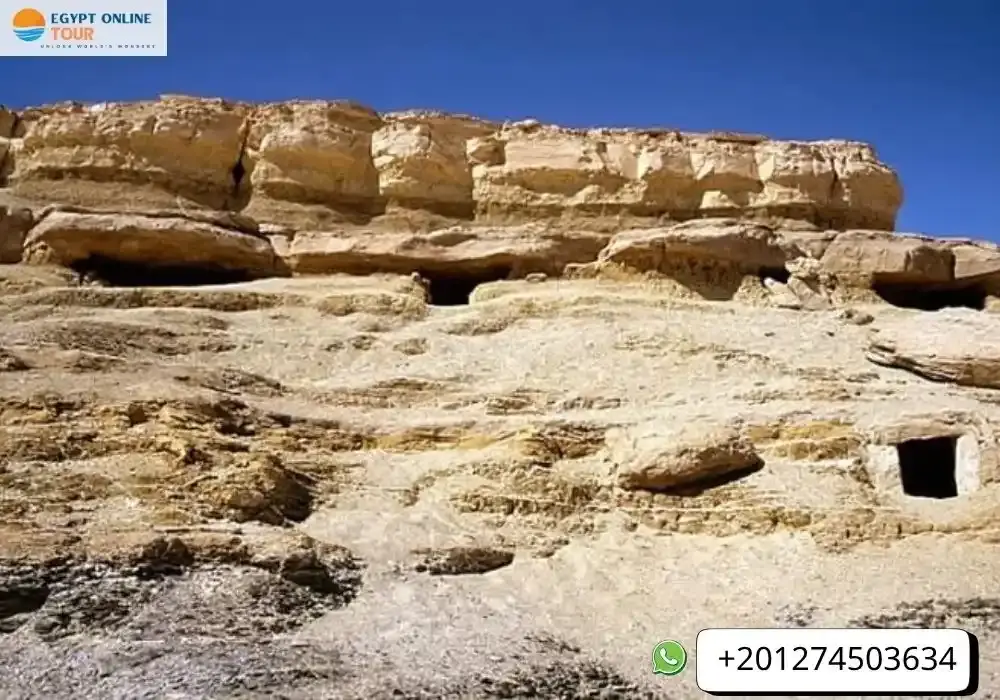
Balat & Ayn Asil (Old Kingdom)
Ain Aseel is an Egyptian archaeological site of great importance in the Dakhla Oasis. It represents one of the largest and most prosperous settlements in terms of size. It is located far from the Nile Valley, providing important insight into administration during the Old Egyptian state era.
Discovery and drilling
Initial discovery: The site was discovered unexpectedly in January 1947 due to a major sandstorm.
Methodological work: The first official excavations began in October 1968 by the famous Egyptologist Ahmed Fakhry.
Continuation: Work was later resumed in 1978 by specialists from the French Institute of Oriental Archaeology (IFAO).
Main discoveries: Excavations revealed mudbrick walls, inscribed stone blocks, and a tomb bearing the name of King Neferkare (Bibi II).
History and structure
Overview:
- The settlement was active in the late Fifth and early Sixth Dynasties, with continued use in the Second Intermediate Period.
- Ain Asil served as the administrative center of the Dakhla region during the reign of Kings Pepi I and Pepi II.
- The site covers about 33 hectares and is divided into two parts: a fortified castle to the north, and a mud-brick settlement extending to the south and east.
- Large-scale fires destroyed much of the city at the end of the Old Kingdom, eventually leading to its abandonment.
Basic archaeological importance
One of the most important discoveries in Ain Aseel is a group of clay tablets engraved in hieratic script dating back to the Sixth Dynasty.
Historical link: These tablets are considered the oldest and strongest evidence confirming the close links between the Dakhla Oasis and the Nile Valley region during that period.
Content: The tablets document the names of rulers and their families from the Bahariya Oasis region.
Other discoveries: The site also revealed inscribed memorial blocks and plaques from the New Kingdom (18th and 19th Dynasties), indicating continued, though perhaps less intensive, use of the area.
When to Visit
Dakhla Oasis has a desert climate typical of Western Sahara. This includes hot summers and mild to cold winters.
On the other hand, it is advisable to avoid visiting Dakhla Oasis during the peak summer months from June to August when temperatures can rise to extreme levels, making outdoor activities uncomfortable and challenging. In addition, accommodation options may be limited during the summer months due to low tourist activity in the area.
Best Season & Weather
The best time to visit Dakhla Oasis in Egypt is during the colder months of late fall, winter, and early spring, specifically from November to March. During this time, the weather is milder, with daytime temperatures ranging from comfortable to warm, making it ideal for exploring the oasis and participating in outdoor activities without the extreme heat of the summer months.
Cold weather is preferred for visiting archaeological sites, enjoying desert safaris, and experiencing the unique culture of the oasis. In addition, the winter months coincide with the peak tourist season in Egypt, so you can expect more amenities, services, and tour options to be available in Dakhla Oasis during this time.
Read about: Best Months to Visit Egypt
Crowd-free Times
It's worth noting that winter is generally the most popular time to visit Dakhla Oasis. You might also consider visiting during the transitional seasons of late fall and early spring when the weather is still pleasant and tourist crowds are smaller, allowing for a quieter and more authentic experience.
- Suggested reading: Visit Siwa Oasis
How to Get There
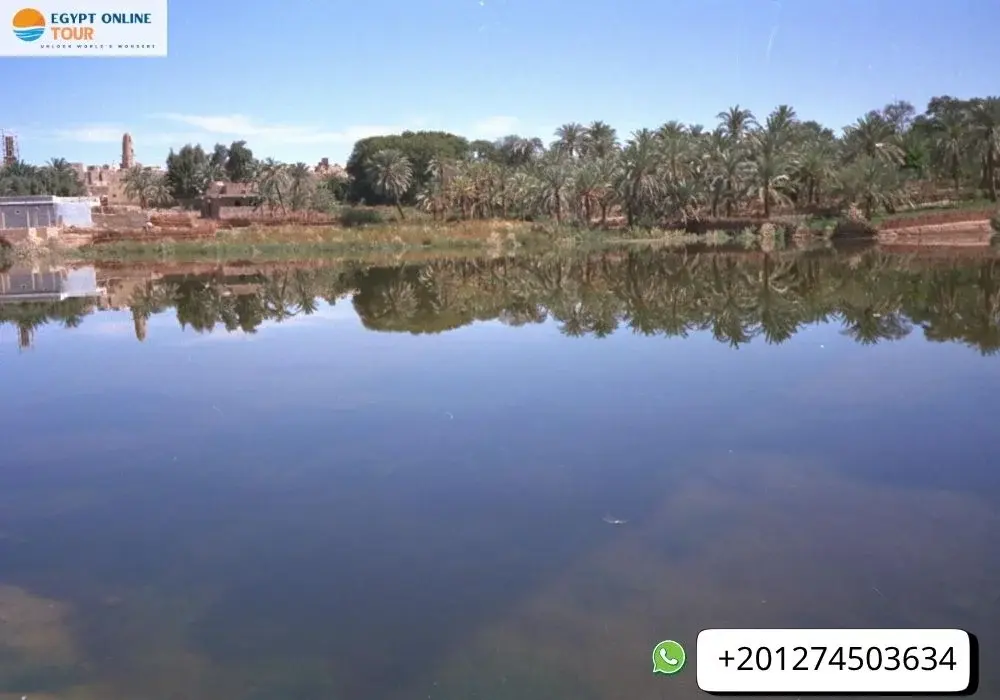
There are several options for traveling to Dakhla Oasis, each catering to different preferences and budgets. Here's an overview of how to get to this magical and captivating place:
From Cairo, Luxor, or Kharga
Cairo-Dakhla:
- 800 km
- 9 and a half hours of travel
There are 4 ways to get from Cairo to Dakhla Oasis.
- By car: Drive from Cairo to Dakhla Oasis
- By taxi: Take the taxi from Cairo to Dakhla Oasis, 752.8 km / 9 h 36 m.
- Fly to Luxor, then take a taxi: 10 h 32m
- Fly from Cairo International Airport (CAI) to Sohag International Airport (HMB), then take the taxi from Sohag International Airport (HMB) to Dakhla Oasis: 15 h 11 m.
- What do you expect from 8 days Cairo Luxor and Siwa Tour Package?
Luxor-Dakhla:
There are 2 ways to get from Luxor to Dakhla Oasis:
- Drive from Luxor to Dakhla Oasis: 492.1 km/7 h 15 m.
- Take the taxi from Luxor to Dakhla Oasis, 492.1 km/7 h 15 m.
- Discover Luxor and Aswan Nile Cruise for unforgettable memories.
Kharga-Dakhla:
Dakhla Oasis is about 170 kilometers away from Kharga Oasis.
You can take a taxi or bus from Kharga to Dakhla, a journey that takes about two hours and during which drivers cross the paved road.
4x4 Transfers & Local Transport
Professional guides navigate soft sands and rocky plateaus, stopping at key geological sites and vantage points for panoramic photos. Expect a full‑day option that covers both the Black and White Deserts.
- Siwa Oasis and White Desert Tour will be also a great chance for an unique experience.
Where to Stay
Eco‑lodges & Guesthouses
Eco-lodges in Dakhla Oasis include the Tarfa Desert Reserve and the Desert Lodge, both of which offer luxurious accommodation that blends with the natural environment using traditional techniques and local materials. Guests can experience guided excursions, cultural visits and local culinary experiences, all while supporting community development and environmental sustainability initiatives.
What to Expect (Facilities)
The distinctive accommodation offers tranquility and luxury stemming from freshness and simplicity. Tarfa is a real haven away from bustling cities and typical tourist attractions. You will get high-quality accommodation, a unique oasis environment and the peace and tranquility embraced by charming deserts.
- You may also be interested in Farafra Oasis, it is a complete guide about it.
Practical Tips
Here are the important practical tips when you decide to visit Dakhla Oasis:
What to Pack (Desert Essentials)
Due to the desert climate, it is essential to pack lightweight, breathable clothing to stay comfortable in the heat. However, also carry modest clothing with you out of respect for local customs, especially when visiting religious sites.
Health & Safety (Springs, Sun)
For Health Precautions: Bring a basic first‑aid kit with rehydration salts, antiseptic wipes, and any personal medications.
For Sun: Don't forget to bring a hat, sunglasses, and high‑SPF
sunscreen to protect yourself from the sun.
Permits & Local Etiquette
- Ask permission before photographing holy places or people.
- Taking off shoes in homes and mosques.
- Accept tea or coffee as a gesture of friendship.
Learn more about: Tips on traveling to Egypt
Suggested Itineraries
1‑Day Highlights
Embark on a magical full-day journey through Dakhla's stunning landscape, where golden sand dunes meet turquoise waters and ancient Bedouin traditions come to life! This exclusive tour is your gateway to the hidden treasures; it's perfect for adventurers, culture lovers, and nature seekers.
Tour highlights:
White sand dunes and pink flamingos: Take stunning photos against surreal desert views and graceful flamingos.
Meet the Bedouins: Visit Imlili, meet the local Bedouins, sip traditional desert tea, and wear authentic desert clothing!
Desert Tea Preparation: Learn the secrets of preparing desert tea and enjoy a delicious local meal.
Royal Beach and Crystal Waters: Swim in the pristine waves of Puerto Rico Beach, a piece of paradise.
Sulfur Hot Spring Therapy: Relax with natural sulfur water in the heart of the desert!
Oyster Park Feast: Taste fresh seafood in a unique coastal setting before returning.
2–3 Day Immersive Stay
2-3 days is the recommended time frame to fully experience the oasis and its surroundings. This period allows you to explore the main sights, immerse yourself in the local culture, and enjoy some outdoor activities without feeling rushed.
During your 2-3 day stay in Dakhla Oasis:
- You can visit key sites such as the mud-brick village of Al-Qasr, the ancient Roman stone monastery temple, and the hot springs of Bir al-Jabal.
- You can also take leisure walks or camel rides in palm groves, visit local markets, interact with friendly residents, and enjoy traditional Egyptian cuisine.
If you have more time, extending your stay to 4 or 5 days will allow you to explore Dakhla Oasis and the surrounding desert landscape more deeply. This extra time can be used for activities such as desert safaris, camping under the stars, bird watching in salt lakes, or simply relaxing and rejuvenating in a tranquil oasis environment.
You may also like to know What to do in Siwa Oasis.
Food & Local Culture
In terms of traditional cuisine, Dakhla Oasis offers some delicious dishes.
Traditional Meals & Dates
Molokhia is a green leafy vegetable cooked with a delicious broth and served over rice or bread.
Fattah is a delicious dish made with bread, rice, and meat, usually lamb or chicken.
These traditional dishes are not only delicious but also reflect the rich culinary history of the oasis.
So, if you are a foodie looking to explore new flavors, enjoy the traditional cuisine of Dakhla Oasis during your visit.
Restaurant recommendations
When it comes to dining in Dakhla Oasis, there are some great restaurant options to choose from.
One of the famous places is located on Sharia Al Wadi, behind Al Forsan Hotel. They serve delicious grilled meats, shish kebab cuisine, and dishes such as potatoes in tomato sauce, rice, and beans.
If you're looking for Egyptian cuisine, head to Sharia Al Thawra Al Khadra Restaurant. There you will find a variety of delicious traditional dishes, fresh juices,, and shisha.
For those who love sweets, there is a bakery that serves fresh pastries straight from the oven.
These dining options will satisfy your cravings and provide you with a taste of local cuisine.
Dakhla Oasis dates:
Its color is light brown, and its sweetness is medium. It is considered one of the best types of Egyptian dates.
Both types of Siwi dates are distinguished by their ability to be stored for long periods while maintaining their quality and taste.
Handicrafts & Souvenirs
Traditional handicrafts, such as weaving and pottery, also thrive in the oasis, offering visitors unique souvenirs to take home.
Read more: Top 10 Souvenirs From Egypt
Tours We Offer
We at Egypt Online Tour will cover all the basics while providing you with the vital elements to customize your dream vacation. With high-quality accommodation, transportation, and English-speaking guides, we make sure you enjoy the Egypt tour experience you've been dreaming of.
Private Oasis Explorer (Driver‑Guide)
The best option for tourists is to rent a private car with a driver. We at Egypt Online Tour can arrange this service for you, with the schedule and availability you require.
Culture & Springs Combo
To experience the "culture and springs collection" of Dakhla Oasis, you can visit ancient Islamic cities, explore Pharaonic and Roman ruins, and relax in natural hot springs. This vast, sparsely populated oasis in Egypt's Western Desert offers a unique blend of rich history and tranquil natural beauty.
You can create a "spring collection" tour of Dakhla Oasis by visiting the many prominent hot and mineral springs in the area. The most famous of them are Bir al-Jabal, Mut Talat, and the spring near the Roman temple in Deir al-Hajar.
Your package tour with Egypt Online Tour can be organized by booking a multi-day desert safari package with a local tour guide or by arranging private transportation for a day trip from Mutt.
These guided visits will take you to several important sites along the way, including Magic Spring. This way, you won't have to spend any time trying to find the spring, which can be difficult, especially since the locals don't call it by the same name.
Desert Camping Add‑on
The Bedouin camp is one of the best places to stay in Dakhla Oasis. The camp has many domed rooms that are cool in summer.
All rooms have private bathrooms and a small terrace in front of them, offering exciting views of the desert and oasis. One of the best places is the restaurant with panoramic views. Youssef is a wonderful host and will make you feel at home from the first moment. He has plenty of tips and many desert tour options to suit all tastes. Don't forget the hot spring across the street, it's so refreshing.
If you want to explore ancient villages, enjoy traditional cuisine, and receive unique souvenirs handcrafted by Bedouins, contact us now and arrange your tour to Dakhla Oasis.
Let our local travel experts help you design the perfect itinerary. Whether you're seeking adventure, culture, or relaxation, we've got you covered!
Frequently Asked Questions
1 Are the hot springs safe for swimming? ▶
2 Do I need a 4x4 to get around? ▶
3 Can I visit without a guide? ▶
4 Is card payment available? ▶
Popular Categories
Popular Posts
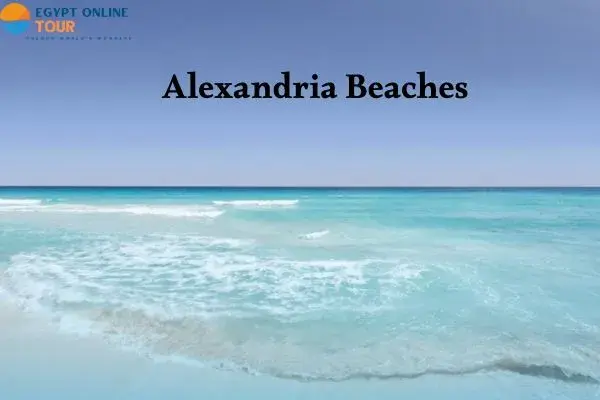
Top Alexandria Beaches You Must Visit 2026
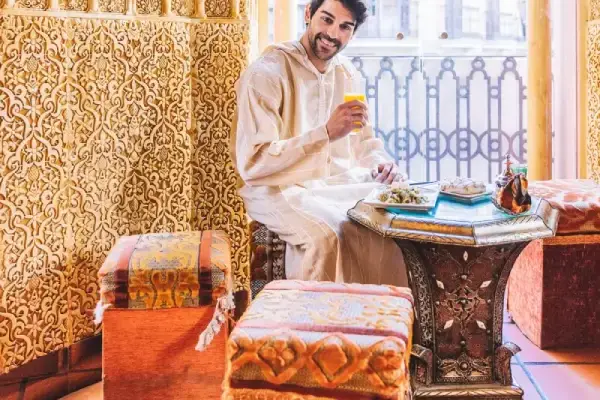
What are the important holidays in Egypt?
